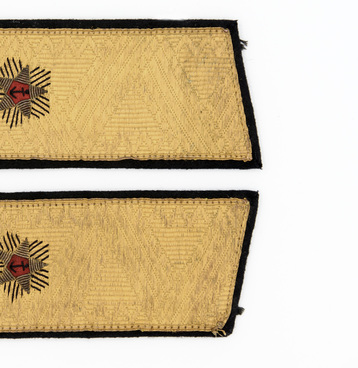The bayonet shovel, presented in the exhibition of the Polyarny Museum of History and Local Lore, was discovered during archaeological excavations in 2002 and helped to link the map of new excavations to the maps created by Nina Nikolaevna Gurina. Not far from the shovel, a peg was also found, usually located in the edge or corner of the excavation.
Nina Gurina (June 17, 1909, Rostov — September 9, 1990, Leningrad) was a Soviet archaeologist, Doctor of Historical Sciences (1961). She specialized in the Stone Age. From 1946 to 1985, she headed the Kola Expedition for the Leningrad Branch of the Institute of Archaeology of the USSR Academy of Sciences. Gurina made a huge contribution to the scientific study of the ancient past of the Kola Peninsula. She conducted archaeological excavations at the Kola Oleneostrovsky grave field of the Neolithic — early Metal Ages (the only monument of this kind on the entire Kola Peninsula) in 1947–1948.
In 1947, only one burial was discovered, which was taken to Murmansk. Now it can be seen in the main exhibition of the Murmansk Regional Museum of Local Lore. It was then decided to carry out more extensive work on the grave field the following year, 1948. The excavation was held in July in favorable weather conditions and 10 more burials were found. Over time Gurina changed her mind about the prospects of continuing work on the Bolshoy Oleny Island. In a 1953 article, she argued that the presence of undiscovered burials in the grave field is very likely. However, she later assured that the monument was completely destroyed. As a result, the next expedition to the grave field was organized only in 2001. It turned out that there were still unexcavated burials in the monument’s area.
Resuming work on the monument, it is important for archaeologists to find the exact place of the end of the previous excavation in order to correctly map the excavations and link the finds to certain points. For this purpose, archaeologists buried a shovel in the corner of the excavation, marking its border when they finished their work. Nina Gurina also abided by this unwritten rule.



